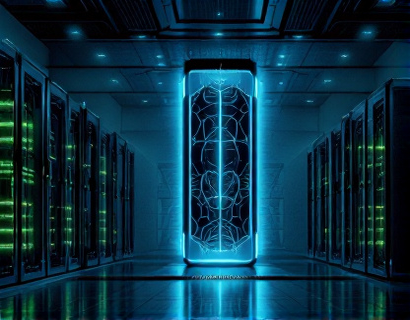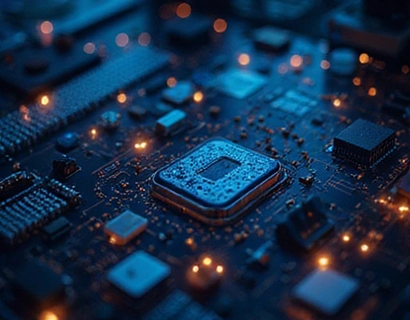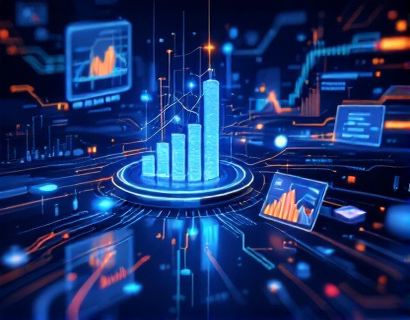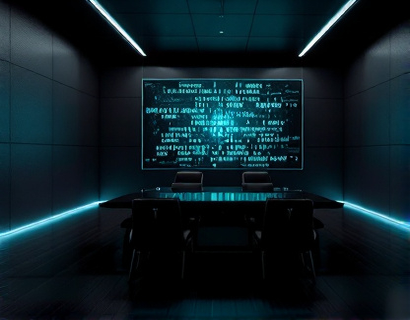Blockchain-Enhanced Registry Software: Revolutionizing Data Management
In the rapidly evolving landscape of data management, the integration of blockchain technology has emerged as a transformative force, offering unprecedented levels of security, transparency, and efficiency. This article delves into the realm of blockchain-enhanced registry software, exploring how it is revolutionizing the way professionals and enthusiasts approach data management, security, and digital transformation. By leveraging the inherent properties of blockchain, such as immutability and decentralization, this innovative software is redefining the standards for registry management.
Understanding Blockchain Technology
Before diving into the specifics of blockchain-enhanced registry software, it is essential to grasp the fundamental concepts of blockchain technology. At its core, a blockchain is a distributed ledger that records transactions across multiple computers in such a way that the registered transactions cannot be altered retroactively. This technology ensures that once data is recorded, it becomes nearly impossible to modify or delete, providing a high level of data integrity and security.
Blockchain operates on a peer-to-peer network, where each participant, or node, maintains a copy of the entire ledger. Transactions are grouped into blocks, and each block is linked to the previous one through cryptographic hashes, forming a chain. This linkage ensures that any attempt to alter a block would require changing all subsequent blocks, a task that is computationally infeasible. The decentralized nature of blockchain eliminates the need for a central authority, reducing the risk of single points of failure and enhancing resilience against cyber threats.
Enhanced Security through Blockchain
One of the most significant advantages of blockchain-enhanced registry software is its ability to provide robust security measures. Traditional registry systems often rely on centralized databases, which are vulnerable to hacking, data breaches, and unauthorized access. In contrast, blockchain's decentralized architecture distributes data across a network of nodes, making it extremely difficult for malicious actors to compromise the system.
Each transaction in a blockchain is encrypted and verified through consensus mechanisms, such as proof of work or proof of stake. These mechanisms ensure that only valid transactions are added to the blockchain, preventing fraudulent activities. Additionally, the immutable nature of blockchain means that once data is recorded, it cannot be altered without detection, providing an auditable trail that enhances trust and accountability.
Transparency in Data Management
Transparency is a cornerstone of blockchain technology, and it plays a crucial role in enhancing the reliability of registry management. In a blockchain-based system, all transactions are visible to all participants in the network, ensuring that everyone has access to the same information. This level of transparency reduces the risk of corruption and errors, as any discrepancies can be quickly identified and addressed.
For professionals in data management, this means that they can have real-time visibility into the status of registry entries, from creation to modification. This transparency not only streamlines processes but also builds trust among stakeholders, as they can verify the authenticity and integrity of the data. In industries where compliance and regulatory adherence are paramount, such transparency is invaluable.
Efficiency and Automation
Blockchain-enhanced registry software not only improves security and transparency but also significantly enhances efficiency through automation and smart contracts. Smart contracts are self-executing contracts with the terms of the agreement directly written into code. They automatically trigger actions when predefined conditions are met, eliminating the need for intermediaries and reducing administrative overhead.
In the context of registry management, smart contracts can automate routine tasks such as data validation, consent management, and record updates. For example, in property registry systems, a smart contract can automatically update ownership records when a property transfer is completed, ensuring that the registry remains up-to-date without manual intervention. This automation reduces the potential for human error and accelerates processes, leading to greater operational efficiency.
Use Cases in Various Industries
The applications of blockchain-enhanced registry software extend across multiple industries, each benefiting from the unique advantages it offers. In the healthcare sector, patient records can be securely and efficiently managed, ensuring that medical histories are accurate and accessible to authorized personnel. This not only improves patient care but also enhances data privacy and compliance with regulations such as HIPAA.
In the supply chain industry, blockchain can provide end-to-end traceability, allowing companies to track the movement of goods from origin to destination. This transparency helps in identifying bottlenecks, reducing fraud, and ensuring the authenticity of products. For instance, in the pharmaceutical industry, blockchain can verify the authenticity of drugs, combating counterfeit products and ensuring patient safety.
The real estate sector stands to gain significantly from blockchain-enhanced property registries. By digitizing property records and transactions, blockchain can reduce the time and cost associated with property transfers, minimize disputes, and enhance the overall efficiency of the real estate market. Smart contracts can automate the execution of property deals, ensuring that all conditions are met before transferring ownership.
Challenges and Considerations
While the benefits of blockchain-enhanced registry software are clear, there are several challenges and considerations that organizations must address when implementing such solutions. One of the primary concerns is scalability. Blockchain networks, particularly those using proof of work consensus mechanisms, can face performance issues as the number of transactions increases. However, newer consensus algorithms and layer 2 solutions are being developed to address these scalability challenges.
Another consideration is the regulatory landscape. As blockchain technology is still relatively new, regulatory frameworks are evolving. Organizations must stay informed about local and international regulations to ensure compliance. Additionally, the integration of blockchain with existing systems requires careful planning and expertise to avoid disruptions and ensure seamless operation.
Future Trends and Innovations
The future of blockchain-enhanced registry software is promising, with ongoing innovations set to further enhance its capabilities. One area of focus is the development of interoperable blockchain platforms, allowing different systems to communicate and share data seamlessly. This interoperability is crucial for creating a more connected and efficient data management ecosystem.
Another exciting development is the integration of blockchain with other emerging technologies, such as the Internet of Things (IoT) and artificial intelligence (AI). IoT devices can generate and record data on the blockchain, ensuring that sensor readings and device interactions are tamper-proof. AI can be used to analyze blockchain data, providing insights and predictive analytics that can drive better decision-making.
Conclusion
Blockchain-enhanced registry software represents a significant leap forward in data management, offering unparalleled security, transparency, and efficiency. By leveraging the inherent properties of blockchain, organizations across various industries can streamline their processes, build trust, and stay ahead in a rapidly digitalizing world. As the technology continues to evolve, the potential for innovation and improvement is vast, making it an exciting area to watch and explore.










































